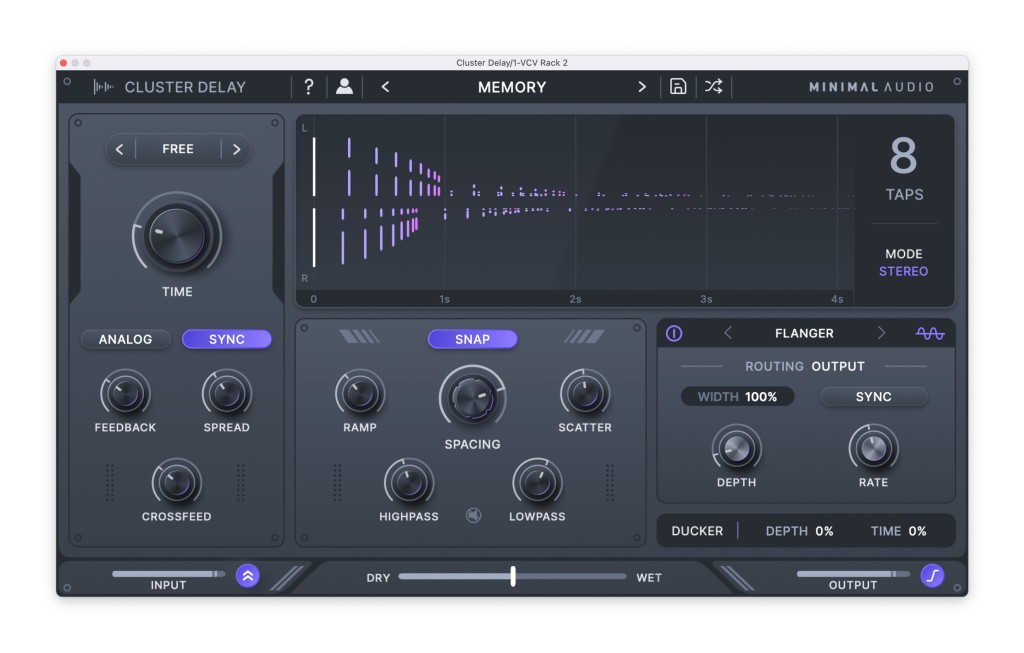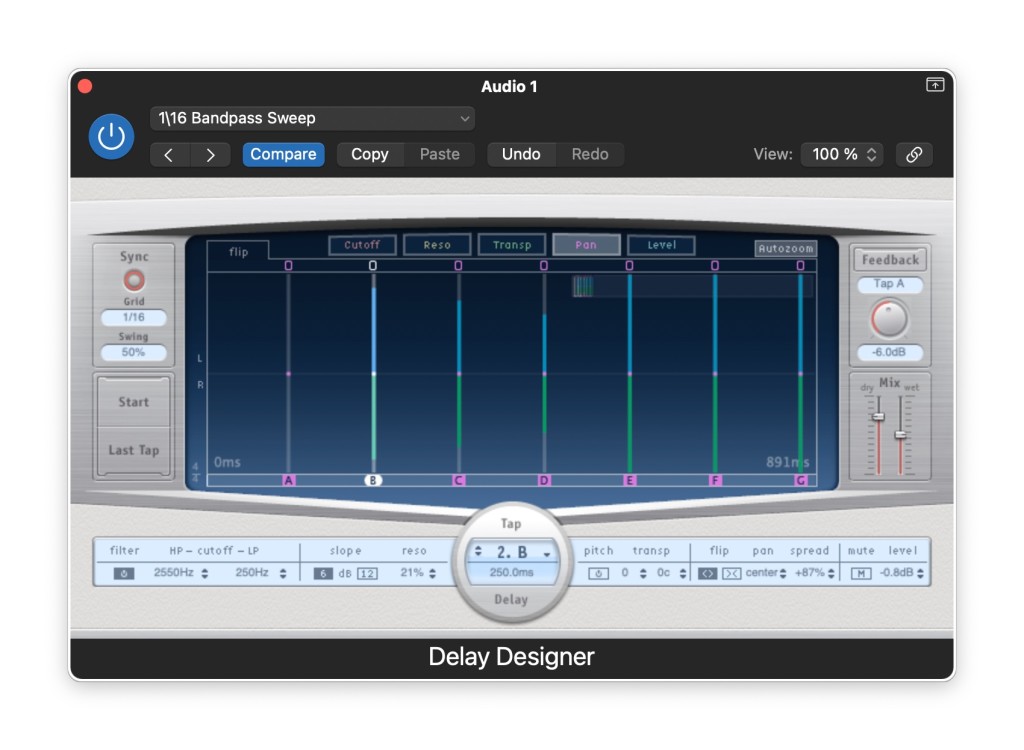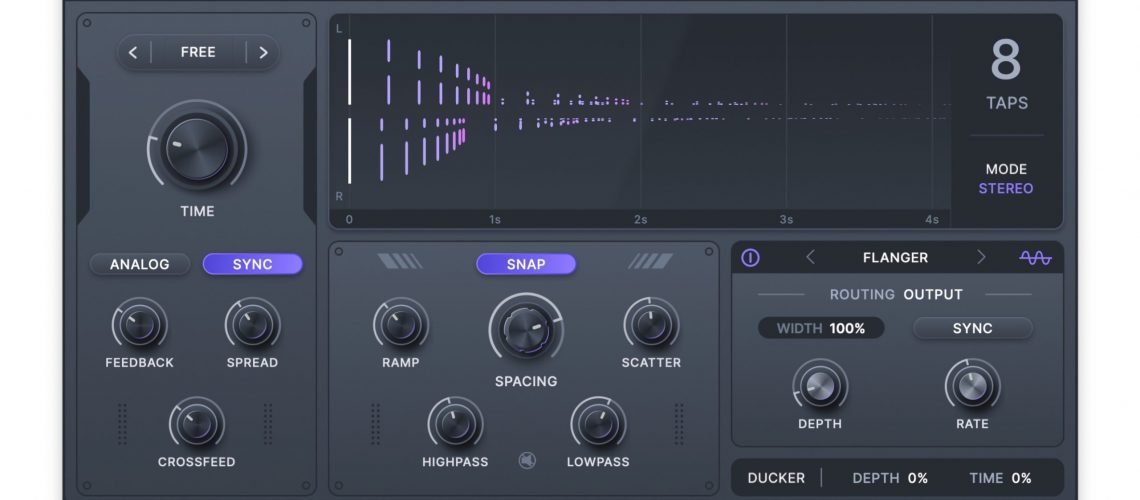Yes, there are too many plug-ins, but I’ve been looking for something like this for a while – especially to replace some aging options. Cluster Delay, a combination of multi-tap delay and multi-effects, could fit the bill.
A chorus of options, but…
We’re not exactly starved for delay plug-ins. But if what you want is a really focused digital multi-tap delay with spatial extras and simple routing, you can get in a bit of a goldilocks situation.
Of the current options, Soundtoys EchoBoy is a strong go-to for a lot of delay effects. Zen Delay is a nice idiosyncratic Erica Synths option with analog grunge (in hardware or modeled), as I recently covered. And Eventide’s Ultratap has a unique sound for leftfield special effects.
But of those, none really covers a full gamut of digital effects with an accessible multi-tap interface, let alone one with visualization. And the two that did show potential there I can’t recommend. Native Instruments’ REPLIKA XT is overdue for an update, and I routinely had performance issues with it. Apple Logic Pro has its Delay Designer which is incredibly powerful and – in need of an update so you can even see its dated UI without squinting, and you’re both macOS-only and Logic-only.

One delay, one screen, all the taps and extras
This just does exactly what I’d want out of a multi-tap – to the point that I was recently looking for something with this design (or wishing for something).
It’s got (almost) everything you’d want:
- Up to 8 taps
- Sequence complex multi-tap delays (set number of taps, then dial in ramp, spacing, and scatter)
- Stereo and mid/side modes
- Usual free and synced delay times, feedback
- Spread and crossfeed settings (crossfeed is feedback across the left and right or mid and side delay lines, so for tightly controlling feedback effects with spacing)
- Analog modeling option (this one is subtle, actually, so much of the time you won’t hear anything – but you will get tape-dubby sounds if you crank the feedback and add lowpass filtering yourself)
Plus, then there’s a multi-effects section that’s really gorgeous:
- Wobble time modulation
- Diffusion blurring
- Chorus
- Phaser
- Flanger
- Frequency shift
All are great for making rich environments. And crucially, each of these has a routing option – input, output, or feedback. Wobble is especially nice – it’s a bit like wow/flutter, but applied directly to modulation, rather than modeling the sound of a tape per se.
Delay times go down to 1ms, and to that you add an additional flanger mode. What you don’t get is dedicated access to LFOs – an argument for a Pro version – but I found most of the time with the additional modules I didn’t miss it. Instead of having a plain-vanilla LFO (which you can use in a modular environment anyway), what you effectively get are pre-constructed modulation patches.
To that, add a ducker with depth and time controls, which is fantastic for going with some extreme effects without drowning your rhythms and mix.
The combined package is lovely, too, with animated visualizations that make it clear what you’re doing, even with complex settings – one-upping the previous champ in that regard, Replika XT.
Like, create digital music or something
This thing just sounds fantastic. Here it is on just a TYSO-DYKO drum module pattern in VCV Rack:
Also, it’s great to have something that is not another analog-modeling/tape-modeling device. Treating wow and flutter as digital effects opens up lots of precise, creative sound design possibilities – whereas a murky, muddy tape effect, while lovely in certain situations, can just get sloppy fast. We’ve got loads of tape effects now, both in hardware and software. (There’s a reason I left out a lot of the delays from Arturia, D16, Softube, and others.)
I was just talking to Artemiy from Sinevibes about this – their Stator effect also is capable of unique results that are nothing like what you’d get from a tape. (The Sinevibes arsenal will likely bring you closest to these sounds in Cluster Delay – and I’m really pleased to have both options.)

The only thing that’s missing for me here, really, gets back to Apple’s Delay Designer. The UI is awful, but the functionality is really unique. There are separate taps for different parameters, and the ability to drag directly on taps to move them around or change amplitude.
There are advantages to Minimal’s approach here – attaching the taps to dials makes them easier to use from a MIDI controller, and it makes way more sense as you start to add feedback. And don’t get me wrong – Logic’s UI is hard to use and hard to see enough that I think a lot of folks will wind up giving up and only using presets. Cluster Delay is the one I intend to actually use. But I can’t help but hope for a Cluster Delay 2.0 that does more – and Minimal’s update record in the past has been great in that regard. (I’d bet on that before Apple addressing Delay Designer, but if anyone in Hamburg read this far, I will take the bus over there and buy everyone drinks. Off the record, of course.)
Cluster Delay is just great. It’s wonderful having this stuff in a single-screen UI. Yes, there are a bunch of presets – but you really don’t need to use them, which is a great measure of the design.
Even in this crowded field, it measures up to some of the best (UltraTap, EchoBoy).
Cluster Delay is €49 with a 30-day return policy.
Oh, and – yeah, ALM Busy Circuits, I’m really sorry I asked to check out the ALM Busy Circuits TYSO DAIKO in Rack. It’s wonderful, and now I want the module, and then there’s not enough HP, so I could get another skiff… I feel guilty mentioning these things to people. I’m probably ruining their lives, too. Well, okay, ruining with delicious sound.
Walkthrough – though honestly, I looked up two things I didn’t understand in the manual; this thing is stunningly easy to understand.
Previously – another Minimal Audio plug worth checking:
And another recent plug-in favorite:
Plus yes, for Logic users – it really is still worth a look, even as I’m griping (just imagine with an updated UI and some functionality tweaks, please Apple):




